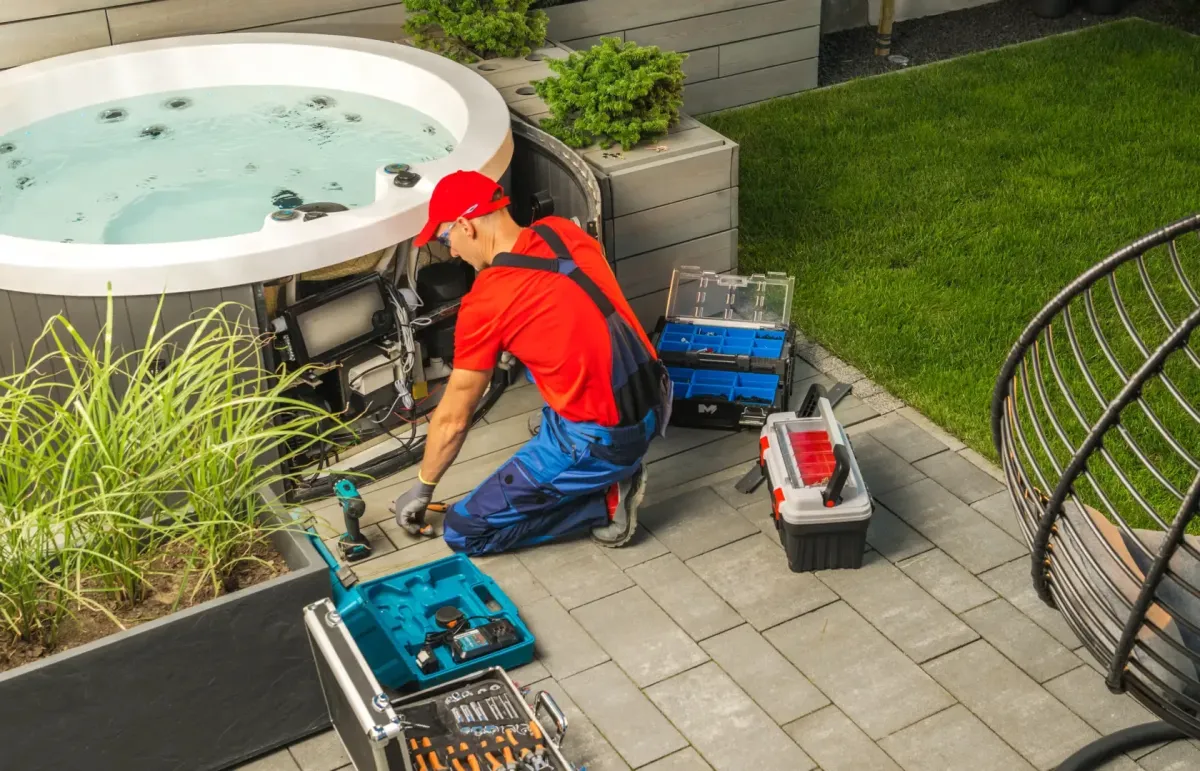
How to Get Rid of Pool Algae Fast (And When to Call the Pros)
🦠 Florida Pool Algae Problems: What Causes Them & How to Eliminate Them Quickly
If you’ve ever walked out to your pool and seen green, yellow, or even black slime creeping along the walls, you’re not alone. Florida’s humid climate creates perfect conditions for algae to thrive—especially in pools that are neglected even for a few days. In this guide, you’ll learn how to get rid of pool algae fast, prevent it from coming back, and when it’s time to call in professional help.
🌿 What Causes Pool Algae?
Algae are microscopic plant-like organisms that multiply rapidly under the right conditions—warm temperatures, sunlight, and stagnant water. In Florida, all three are present almost year-round.
Common causes of algae in Florida pools:
Low sanitizer (chlorine) levels
Poor water circulation
Dirty filters or pumps
Debris buildup
Unbalanced pH or alkalinity
Heavy rains or storms diluting chemicals
If your pool isn’t on a consistent cleaning schedule like weekly pool maintenance in Oak Hill, FL, algae can develop fast—even overnight.
🧪 3 Types of Algae (And What They Look Like)
1. Green Algae (Most Common)
Appears as cloudy water or green slime on walls and floors
Often starts after heavy rain or heat spikes
Easy to treat if caught early
2. Yellow/Mustard Algae
Looks like yellowish or brown powder on pool surfaces
Resists chlorine and hides in shaded areas
Can spread rapidly and require stronger chemicals
3. Black Algae (Most Stubborn)
Dark spots on plaster, often in cracks or crevices
Grows deep roots into pool surfaces
Extremely resistant and usually requires pro treatment
🚿 How to Get Rid of Pool Algae (Step-by-Step)
Step 1: Test and Balance Your Water
Before adding anything, test your pH, alkalinity, and chlorine levels.
Aim for pH: 7.2–7.4
Alkalinity: 80–120 ppm
Chlorine: raise to shock level (10 ppm+)
A weekly pool maintenance service in Merritt Island, FL can handle this for you if unsure.
Step 2: Brush Everything Thoroughly
Use a stiff-bristle brush to scrub:
Walls and floor
Steps and benches
Behind ladders and light niches
Waterline tile
Don’t skip this—it loosens algae so the chlorine can kill it more effectively.
Step 3: Shock the Pool
Use calcium hypochlorite or non-chlorine shock based on pool type.
Green algae: double the normal shock dose
Yellow algae: triple dose + mustard algaecide
Black algae: shock + special black algae killer
Run the pump for 24–48 hours nonstop and keep the filter clean.
For details on shock types, check Swim University's pool shock guide
Step 4: Clean the Filter
Algae spores love to hide in dirty filters.
Backwash sand or DE filters
Rinse cartridge filters thoroughly
Repeat every 1–2 days until water clears
If your filter is clogged or torn, minor pool repairs in Rockledge, FL may be needed.
Step 5: Test Again and Rebalance
Once the algae is gone and water is clear, test everything again:
Adjust pH, alkalinity, and chlorine
Add stabilizer (CYA) if needed
Resume normal chlorination
It may take 3–5 days to fully eliminate algae depending on severity.
🧠 When to Call a Professional
You should call a pro immediately if:
You see black algae
The pool remains green after shocking
You smell strong chlorine but still see cloudiness
You suspect plumbing issues or leaks
Your filter pressure keeps spiking
Weekly pool maintenance in Mims, FL includes algae prevention and treatment—so you don’t have to do it alone.
✅ How to Prevent Pool Algae for Good
Test water 2–3x/week (daily in summer)
Keep chlorine between 2.0–4.0 ppm
Brush walls and vacuum weekly
Clean or backwash filters regularly
Remove leaves and debris daily
Run pump for 8–12 hours/day in summer
Shock monthly as a preventive
For additional safety, follow the CDC’s pool sanitation guidelines.
📋 Florida Pool Algae Prevention Checklist
TaskFrequencyTest chemical levels2–3x/weekBrush walls & stepsWeeklyShock the poolMonthly (or after storms)Clean filtersBi-weeklySkim debrisDailyRun circulation8–12 hrs/day in summer
Pairing this with weekly pool maintenance in Titusville, FL makes your pool virtually algae-proof.
🧠 FAQs About Pool Algae
Is pool algae dangerous?
Yes—algae can harbor harmful bacteria and make surfaces slippery, increasing the risk of illness or injury.
Can I swim with algae in the pool?
It’s not recommended. Wait until the water is clear, balanced, and free of visible growth.
How long does it take to get rid of algae?
Green algae: 2–4 days
Yellow algae: up to 1 week
Black algae: 1–2 weeks or longer with professional help
🏁 Final Thoughts
Algae is one of the most frustrating—and common—problems pool owners face in Florida. The key is to act fast, clean thoroughly, and maintain proper water balance. With the right approach (and some help if needed), you can restore your pool to perfect condition and keep it that way.
Let Quality Pools Service take care of your pool algae problems—fast. Click here to request your free quote and let the pros handle the dirty work.
